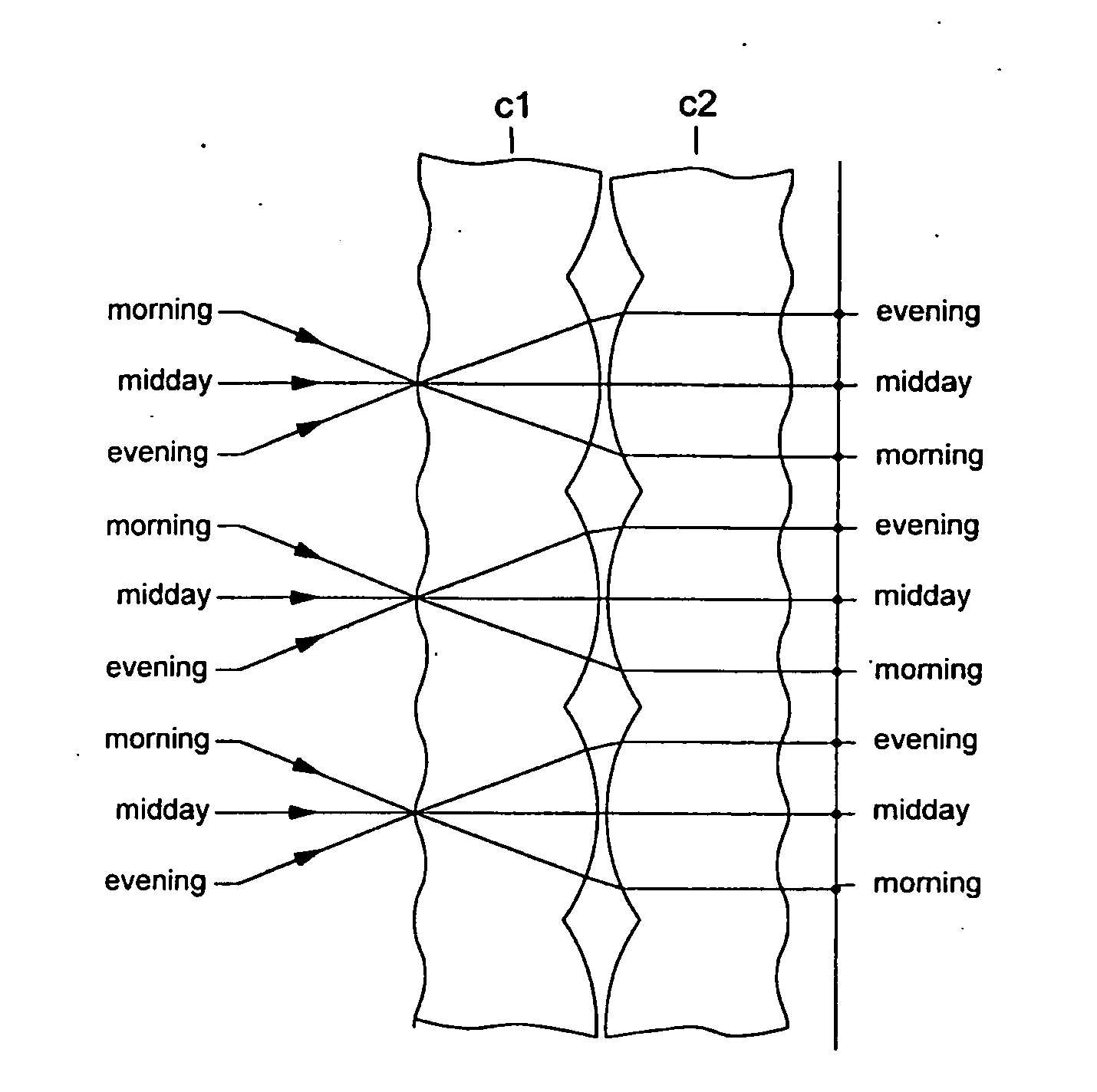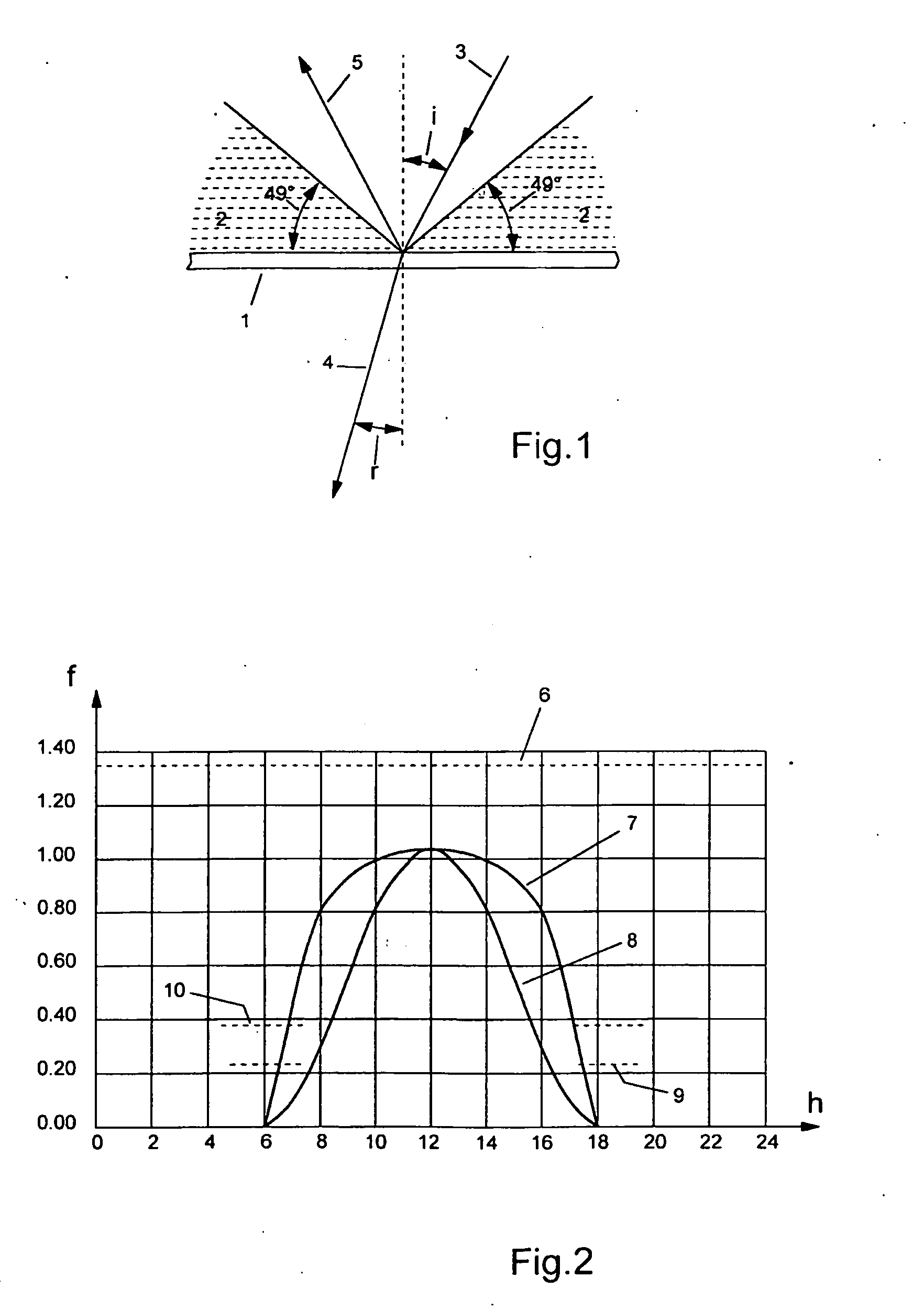Photovoltaic Flat Panel With Enhanced Acceptance Angle Comprising Micro-Lens Array In Laminating Film
- Summary
- Abstract
- Description
- Claims
- Application Information
AI Technical Summary
Benefits of technology
Problems solved by technology
Method used
Image
Examples
Example
[0047]In order to better grasp the invention's functional principles, a premise on the following theoretical considerations is made.
[0048]The energy capable of being derived from sunlight is also a function of the latitude, hour and angle of impingement of the solar rays.
[0049]The density of radiating power received by the earth's surface at a latitude of 0° and with the sun at the azimuth, frequently referred to by S, attains an approximate peak value of 1 kW / m2 depending on many factors. In attempting to capture this energy by absorbing it on a perfectly black body, the equilibrium temperature is obtained by the well known equation:
S=k*T*exp4
where k equals the Boltzmann constant leading to T=364° K, which is precisely the boiling point of water.
[0050]One of the methods for boosting the energy yield of a photovoltaic system is that of using solar energy “concentrators” based on lenses or mirrors of various types. If this holds true for thermal systems, the approach substantially di...
PUM
 Login to View More
Login to View More Abstract
- A plastic film bearing micro-incisions that form an array of multi-focal holographic micro-lenses (m1, m2) of infinitesimal size, capable of being positioned on the panel in a random manner, or
- A pair of plastic films superimposed on each other, bearing on their inner and outer surfaces micro-undular forms capable of creating a series of micro-lenses (c1, c2) of an off-spherical shape and infinitesimal size, having different refraction indices and capable of being positioned on the panel in a random manner.
Description
Claims
Application Information
 Login to View More
Login to View More - R&D
- Intellectual Property
- Life Sciences
- Materials
- Tech Scout
- Unparalleled Data Quality
- Higher Quality Content
- 60% Fewer Hallucinations
Browse by: Latest US Patents, China's latest patents, Technical Efficacy Thesaurus, Application Domain, Technology Topic, Popular Technical Reports.
© 2025 PatSnap. All rights reserved.Legal|Privacy policy|Modern Slavery Act Transparency Statement|Sitemap|About US| Contact US: help@patsnap.com



